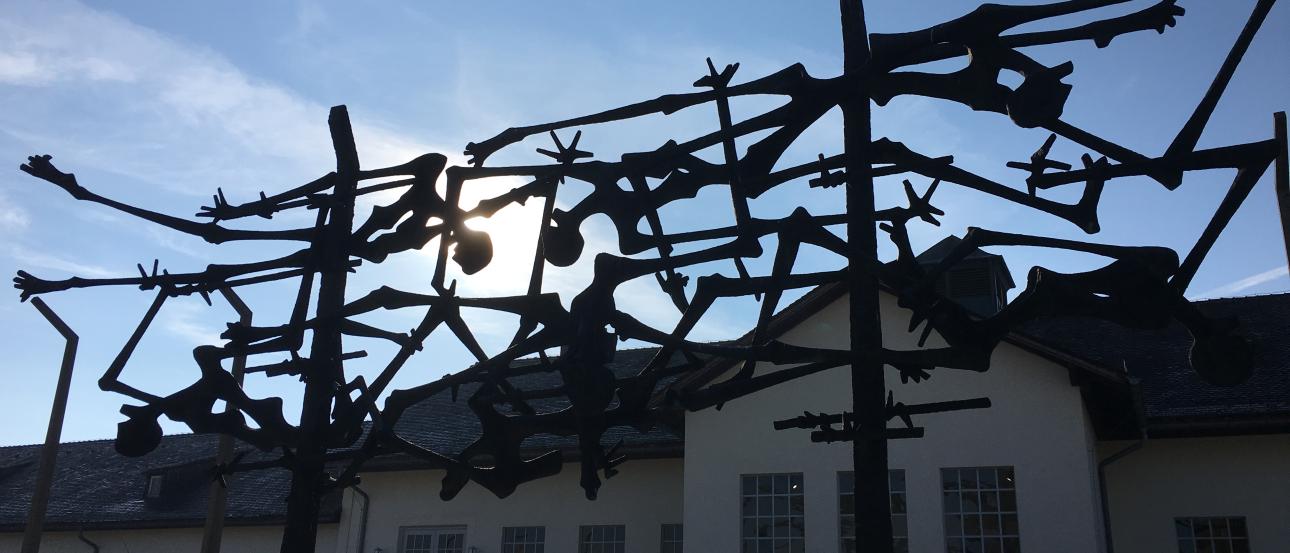I’ve always considered myself a bit of a history buff, especially when it comes to military conflict. Like many, something about World War II in particular has always fascinated me. The courage of that generation and their ability to stand up in the face of a great evil is unlike anything we’ve seen since.
However, it is important not to lose sight of the fact that the years before and during World War II are some of the darkest times the world has ever seen. Millions of lives were lost, countries torn apart, destroyed, and some cities completely erased. But since, the world has rebuilt. Cities have been reconstructed, memorials set in place, and history books in detail accounting those tragic years. Indeed, nearly every aspect of the culture around WWII, including art and film, are geared towards remembrance in detail of what happened.
And to be honest, it’s easy to look at a history book and think “oh, how terrible!” It’s easy to look back and acknowledge the wrongs, remember the rights, and resolve to have those events never repeat themselves. This is all easy, and any decent human would look back on something like the Holocaust and feel contempt, disdain, shame, sorrow, anger, among a host of other emotions.
However, there is something different about actually being there.
Dachau was the first concentration camp established by the Nazis, and originally served as a destination for political enemies of the Nazi party, following Adolf Hitler’s rise to Reich Chancellor in 1933. As the decade wore on and Nazi Germany became increasingly aggressive, prisoners from conquered countries and persecuted religious groups were sent to the camp. As German aggression increased in WWII, so did Dachau’s responsibilities. Workers were forced into manufacturing munitions and arms, to fuel the Nazi war machine. All told, more than 30,000 prisoners lost their lives at Dachau, with an unknown amount of additional undocumented deaths.
As you enter the camp the cynical and ominous saying “Arbeit macht frei”, or “Work will make you free”, is prominent in wrought-iron atop the gate. The original entrance building with the guard tower, u-shaped main building and adjacent prison still stand as they did back during the camp’s operation. Though most of the prisoner housing was removed following the war, two barracks have been reconstructed to give visitors a glimpse into the past and the horrible conditions in which prisoners were kept.
The foundation that preserves the camp and runs the historical side of things does a faithful job to tell the story of what happened in full honesty and detail. On the day that I was there (a Monday morning in late October), there were countless high school students on their own tours. The tour guide even suggested that this was a requirement for high school age students, though I was unable to confirm it myself. Either way, it is more than admirable that a history which, at one point, was being frantically buried and erased is now being taught to all students.
In this case though, the truth truly does hurt. Seeing the places where prisoners were crammed into sleeping quarters. Walking where roll call was once held. Witnessing where prisoners were held in “standing cells” for days at a time. Standing in SS interrogation rooms. Passing through buildings built under forced labor and horrible treatment. The physical presence drives home the level of abject misery.
In a world of constant connectivity and endless information at our fingertips, nobody was on their phone. Nobody was texting, calling, or taking selfies. Aside from taking pictures of the camp, you’d be hard pressed to tell who actually had a phone and who might have left theirs in the car. In a group of 30+ people, everybody was unwaveringly reverent. And for good reason: the setting demands it. Like I said, it’s one thing to have a somber day in 9th grade world history learning about the Holocaust, and then go on living like you did before. There is something altogether different about being there in person. You have an inescapable ominous sense as you walk around the former camp, as if the ground itself is slowly letting go of the despair from a long time ago.
To be honest, you couldn’t have asked for a more beautiful day either. The Bavarian region in Germany can be known for cold snaps here and there, but the weather was near perfect (for me). Temperatures in the mid-50’s, barely a cloud in the sky, and the beautiful fall palette all around gave a contrast to where I was. That’s where I found something though. Even though this place was home to horrible acts, there was still some beauty to be found.
It’s almost appropriate that things happened that way. The wounds of the Holocaust and WWII may not be fresh, especially for someone in the younger generation like myself. But as time goes on, scars of the past remind the world to never let history repeat itself. So no, we have not forgotten and must never forget what happened.
Dachau showed me that there is beauty to be found even in places with the worst of histories, and that seeing something in person is considerably more impactful than learning from a textbook.
Until next time,
Connor

Connor Hickle
<p>I am 21 years old, a rising senior at Wofford College, and I am pursuing a B.A. in Finance. My interests include cars, motorcycles (pretty much anything with wheels), and sports. I pass my free time by hanging out with family and friends, going to the movies, working out, and watching Netflix. A weird fact about me is that I enjoy philosophical discussions.</p>







